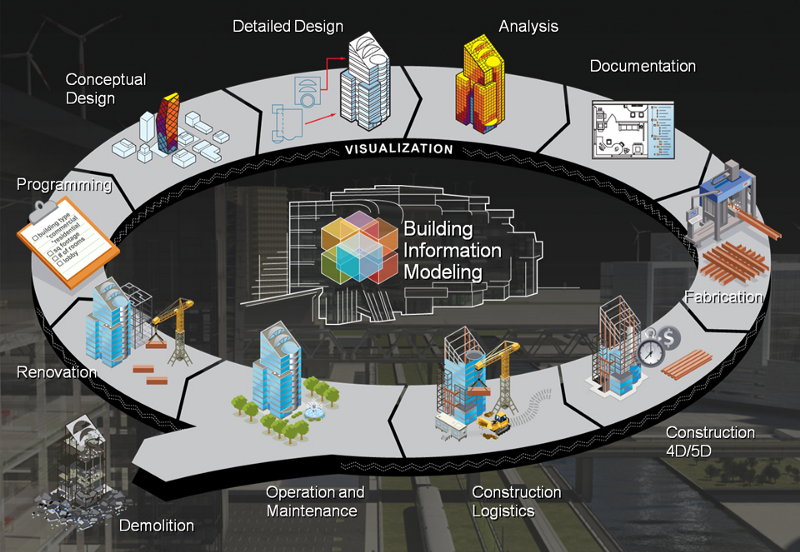You may be noticing some trends in the industry and seeing how BIM is becoming more predominant lately. Take a look at our latest webinar on BIM and Trends in the Construction Industry, by Soft Tech Strategic Account Manager – Brett Perez.
What is BIM?
Building Information Modeling (BIM) is a process, beginning with the detailed documentation or design specification you need to create an intelligent 3D model of the site you are working with. BIM covers the entire lifecycle of the project, starting from renovation, programming, design, analysis and documentation, fabrication, construction, and operation and maintenance.
BIM allows you to use the information in the 3D model to analyse and improve your design before it’s even built, saving time and eliminating potential problems. It will also allow for working with the just-in-time methodology, reducing times within the production system as well as response times from suppliers and to customers.


What is the process of BIM?
The process of BIM supports the creation of intelligent data that can be used throughout the lifecycle of a building or infrastructure project. This is broken into the following four phases:


Why is BIM important?
It is estimated by the United Nations that by 2050, the worlds population will be sitting around approximately 10 billion. This is a large number of people to house and will inevitability increase the development and growth in cities around the world. It’s fair to say we won’t be able to develop existing land at the current rate, we’re going to have to look at refurbishing existing infrastructure to keep up with global demand.
With BIM, we have the opportunity to look at smarter, more efficient ways to design and build into the future, creating smarter and more resilient spaces too. This is important because with the 6 star energy rating standards coming into effect and global commitments to decreasing our carbon footprint, we have the opportunity to build faster and smarter while taking into account new and changing industry standards. BIM will also play a vital role in helping to maintain and restore buildings and infrastructure already in use.
Industry expectations – now and in the future
You may already be receiving requests from architects in this area, especially to hand over a BIM Model, and you may not be sure of how to provide this data. What they are really asking for is accurate data from within your models that include:
- Materials
- Weight
- Cost
- And potentially the make and model
They normally request this information quite early in the design stage and they prefer this data to be sent in a common file format such as a Revit file or an IFC file.
View the full webinar on BIM & Trends in the Construction Industry via the link below:
If you have any questions on BIM, or are needing help with a request for other design team requirements in BIM, please get in touch with Brett Perez here at Soft Tech. He can help you with these requirements.
Content credit: Benefits of BIM – AutoDesk
